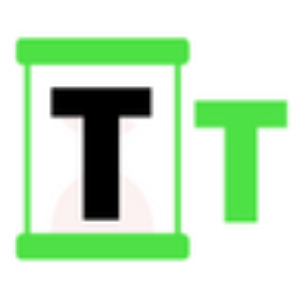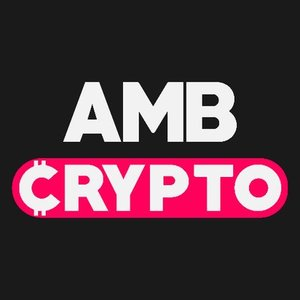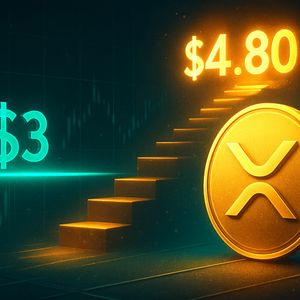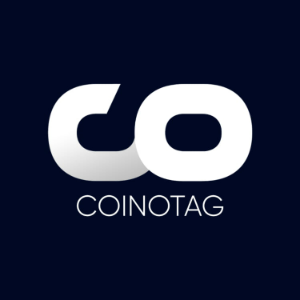Tokenization’s Transformative Power: Goldman Sachs CEO Champions Digital Assets in Financing
8 min read
BitcoinWorld Tokenization’s Transformative Power: Goldman Sachs CEO Champions Digital Assets in Financing Are you ready for a seismic shift in how the world handles money? The financial landscape is on the cusp of a revolutionary transformation, and leading the charge is none other than Wall Street giant Goldman Sachs . Their CEO recently underscored the immense opportunities presented by tokenization , particularly within the crucial realm of financing . This isn’t just about cryptocurrencies; it’s about reimagining the very infrastructure of global finance, leveraging blockchain technology to unlock unprecedented efficiencies and access to digital assets . For decades, traditional finance has operated on a foundation of intermediaries, complex paperwork, and often slow settlement times. But a new paradigm is emerging, one where assets, from real estate to rare art, and even traditional securities, can be converted into digital tokens on a blockchain. This seemingly simple concept holds the power to democratize access, increase liquidity, and streamline processes that have long been cumbersome. Let’s delve deeper into why one of the world’s most influential financial institutions is so bullish on this burgeoning field. What Exactly is Tokenization, and Why Does it Matter for Financing? At its core, tokenization is the process of representing a real-world asset (or a right to an asset) as a digital token on a blockchain. Think of it like this: instead of holding a physical deed to a property, you hold a digital token that represents ownership of that property, or a fractional share of it. This token is secure, immutable, and easily transferable on a distributed ledger. Why is this a game-changer for financing ? Fractional Ownership: Imagine investing in a fraction of a skyscraper or a multi-million dollar bond. Tokenization makes this possible, opening up high-value assets to a broader pool of investors. Increased Liquidity: By breaking down large assets into smaller, more accessible units, tokens can be traded more easily on secondary markets, enhancing liquidity. Reduced Costs: Automation through smart contracts can cut out many intermediaries and manual processes, leading to lower transaction fees and operational costs. Enhanced Transparency: Every transaction involving a tokenized asset is recorded on an immutable ledger, providing a transparent and auditable trail. This digital transformation isn’t just theoretical; it’s already being explored and implemented across various sectors, promising to revolutionize how capital is raised, managed, and traded. Goldman Sachs’ Strategic Embrace of Digital Assets When a titan like Goldman Sachs speaks, the financial world listens. The recent remarks from their CEO underscore a significant shift in perspective within traditional finance towards digital assets . For years, major banks cautiously observed the crypto space from a distance. However, as the underlying blockchain technology matures and regulatory clarity slowly emerges, institutions are recognizing the profound potential beyond speculative trading. Goldman Sachs has been steadily increasing its involvement in the digital asset space. From exploring blockchain-based bond issuance to offering Bitcoin-backed loans and creating dedicated digital asset divisions, their strategy is clear: integrate these new technologies into their core offerings. Their interest in tokenization , particularly for financing , isn’t a speculative gamble; it’s a strategic move to future-proof their business model and capitalize on emerging market efficiencies. The bank’s leadership understands that the future of finance lies in leveraging technology to create more efficient, transparent, and accessible markets. By championing tokenization, Goldman Sachs aims to position itself at the forefront of this evolution, offering clients innovative solutions for capital raising, asset management, and trading. Unlocking New Opportunities: The Benefits of Tokenized Financing The shift to tokenized financing isn’t merely about adopting new technology; it’s about unlocking a host of tangible benefits that can reshape capital markets. The opportunities that Goldman Sachs and other forward-thinking institutions are eyeing are substantial: Streamlined Capital Raising Imagine a company needing to raise capital. Traditionally, this involves complex underwriting, extensive legal documentation, and a lengthy roadshow. With tokenization, the process can be significantly streamlined: Faster Settlements: Instead of days or weeks, transactions can settle in minutes or hours, freeing up capital more quickly. Automated Compliance: Smart contracts can embed compliance rules directly into the tokens, automating investor accreditation, transfer restrictions, and other regulatory requirements. Reduced Intermediaries: By removing layers of middlemen, costs are reduced, and the process becomes more direct between issuers and investors. Enhanced Liquidity for Illiquid Assets One of the most compelling aspects of tokenization is its ability to make illiquid assets liquid. Assets like real estate, private equity, and even fine art are typically difficult to buy or sell quickly. Tokenization changes this dynamic: Feature Traditional Financing Tokenized Financing Asset Access Limited to large, accredited investors for illiquid assets Fractional ownership, broader investor base Liquidity Low for private assets, long lock-up periods Higher potential via secondary markets, 24/7 trading Settlement Time Days to weeks Minutes to hours Costs High due to intermediaries, legal fees Potentially lower due to automation and fewer intermediaries Transparency Opaque, requires due diligence High, transactions recorded on immutable ledger This increased liquidity not only benefits investors by providing exit opportunities but also benefits issuers by making their assets more attractive to a wider range of capital providers. Global Reach and Accessibility Blockchain technology inherently operates globally. This means that tokenized assets can be offered to investors worldwide, breaking down geographical barriers that often complicate traditional cross-border financing . This expanded reach can lead to more efficient price discovery and greater capital formation. Navigating the Road Ahead: Challenges for Blockchain Technology and Digital Assets While the promise of tokenization and digital assets is immense, the path forward is not without its hurdles. Goldman Sachs , like any major institution venturing into this new territory, must contend with several significant challenges that pertain to the underlying blockchain technology and the broader ecosystem: Regulatory Uncertainty Perhaps the most pressing challenge is the evolving and often fragmented regulatory landscape. Different jurisdictions have varying approaches to classifying and regulating digital assets, which can create legal ambiguities for cross-border transactions and compliance. Clear guidelines are essential for institutional adoption to scale. Scalability and Interoperability For tokenization to truly revolutionize global financing , the underlying blockchain networks need to be highly scalable, capable of handling millions of transactions per second. Furthermore, different blockchains need to be able to communicate and interact seamlessly (interoperability) to avoid fragmented markets and ensure efficient asset transfers. Security Risks and Cyber Threats While blockchain is inherently secure, the interfaces and platforms built on top of it are still susceptible to cyberattacks, hacks, and smart contract vulnerabilities. Protecting substantial amounts of value represented by digital assets requires robust security measures, auditing, and continuous vigilance. Market Infrastructure Development The necessary market infrastructure, including custodial solutions, trading platforms, and clearing mechanisms specifically designed for tokenized securities, is still in its nascent stages. Building this robust ecosystem requires significant investment and collaboration across the industry. Education and Adoption Barriers Despite growing awareness, a significant portion of the traditional finance world and the general public still lacks a deep understanding of blockchain technology and tokenization . Overcoming this knowledge gap and fostering widespread adoption requires ongoing education and demonstrable success stories. Real-World Applications: Where is Tokenized Financing Already Making Waves? The vision articulated by Goldman Sachs is not futuristic fantasy; real-world applications of tokenization in financing are already emerging, demonstrating the practical utility of this innovative approach: Tokenized Real Estate One of the most intuitive applications is in real estate. Large properties can be tokenized, allowing investors to buy fractional ownership. This has been applied to commercial buildings, luxury resorts, and even residential units, opening up a traditionally illiquid asset class to a much broader investor base. This can facilitate quicker property sales and allow smaller investors to gain exposure to high-value real estate. Digital Bonds and Debt Instruments Major financial institutions, including the European Investment Bank and HSBC, have already issued digital bonds on blockchain platforms. These tokenized bonds offer benefits like faster settlement, reduced issuance costs, and increased transparency compared to their traditional counterparts. This demonstrates a clear path for traditional fixed-income markets to embrace blockchain technology . Private Equity and Venture Capital Private markets are notorious for their illiquidity and long lock-up periods. Tokenization offers a way to bring greater liquidity to private equity and venture capital funds, allowing for secondary trading of fund interests. This could make private market investments more attractive to a wider range of institutional and even retail investors, revolutionizing capital formation for startups and growth companies. Supply Chain Finance Tokenization can also enhance supply chain finance by tokenizing invoices or purchase orders, making them easier to finance and trade. This can unlock capital for small and medium-sized enterprises (SMEs) that often struggle with access to traditional credit, by providing a more transparent and efficient way to manage working capital. The Future Vision: How Goldman Sachs Sees Digital Assets Reshaping Finance The long-term vision articulated by leaders at Goldman Sachs for digital assets goes beyond mere efficiency gains. They foresee a future where the financial markets are fundamentally restructured, driven by blockchain technology and the widespread adoption of tokenization . This future could involve: 24/7 Global Markets: The inherent always-on nature of blockchain could lead to financial markets that operate around the clock, breaking free from traditional business hours and geographical limitations. Programmable Money: The ability to embed logic into tokens (via smart contracts) means that money itself can become ‘programmable.’ This could enable automated payments, conditional transfers, and entirely new financial products. Democratized Access: By lowering barriers to entry and enabling fractional ownership, tokenization could lead to a more inclusive financial system where a broader range of individuals and smaller institutions can participate in sophisticated investment opportunities. Interconnected Financial Ecosystems: A world where various financial instruments, from equities to commodities, are tokenized and can seamlessly interact on different blockchain networks, creating a highly integrated and efficient global financial ecosystem. This isn’t about replacing traditional finance but rather enhancing it, making it more resilient, efficient, and accessible for the next generation of global capital markets. Actionable Insights for Institutions and Investors For institutions looking to navigate this evolving landscape, and for investors keen on understanding the opportunities, here are some actionable insights: Stay Informed: The pace of innovation in blockchain technology and digital assets is rapid. Continuous learning and monitoring of regulatory developments are crucial. Explore Pilot Programs: Institutions should consider small-scale pilot projects for tokenization to gain hands-on experience and understand the practical implications before full-scale adoption. Focus on Infrastructure: Investing in robust and secure digital asset infrastructure, including custody solutions and trading platforms, is paramount. Collaborate: The ecosystem is still developing. Collaboration with technology providers, regulators, and other financial institutions can accelerate progress and foster standardization. Understand the Underlying Asset: For investors, remember that the token is merely a digital representation. The value still lies in the underlying asset and its fundamentals. Conduct thorough due diligence on both the token and the asset it represents. The journey towards a fully tokenized financial system will be gradual, but the direction is clear. Institutions like Goldman Sachs are not just observing; they are actively shaping this future. The pronouncements from the CEO of Goldman Sachs are a powerful testament to the undeniable potential of tokenization , particularly in the critical domain of financing . It signals a future where digital assets , powered by robust blockchain technology , will redefine how capital is raised, transferred, and managed globally. While challenges remain, the benefits of increased liquidity, reduced costs, and enhanced transparency are too compelling to ignore. As more institutions embrace this paradigm shift, we are on the cusp of witnessing a more efficient, accessible, and interconnected financial world. The future of finance is digital, and it’s arriving faster than many anticipate. To learn more about the latest digital assets trends, explore our article on key developments shaping blockchain technology institutional adoption. This post Tokenization’s Transformative Power: Goldman Sachs CEO Champions Digital Assets in Financing first appeared on BitcoinWorld and is written by Editorial Team

Source: Bitcoin World



